It’s hard to believe that the Dalkey tern season is wrapping up! Pretty soon these tiny seabirds will begin the arduous journey south for the winter. Common Terns migrate as far as south-western Africa, while Arctic Terns will fly all the way to Antarctica.
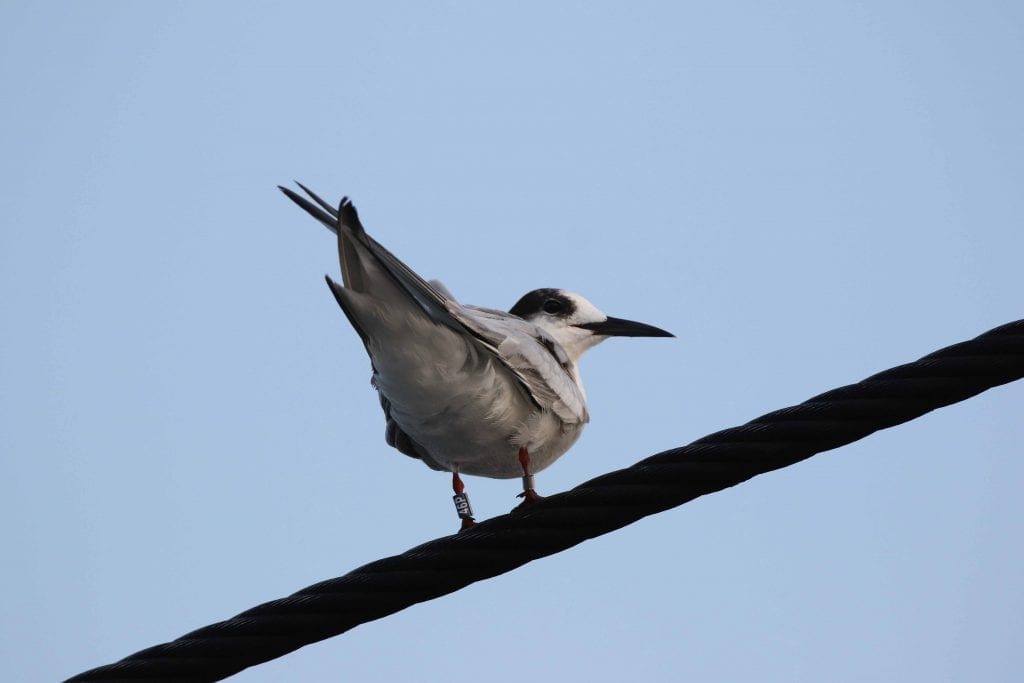 Common Tern ’46P’, colour-ringed by the Dublin Bay Birds Project as a chick in Dublin Port in 2019 and observed off the coast of Senegal in Nov 2019. (Kebba Sosseh)
Common Tern ’46P’, colour-ringed by the Dublin Bay Birds Project as a chick in Dublin Port in 2019 and observed off the coast of Senegal in Nov 2019. (Kebba Sosseh)
We’ve estimated that 28 tern chicks have already taken the first step on this journey, having taken to the wing from the Dalkey islands. A further 2 chicks are nearly fledged.
 Arctic Tern ‘P6’ fledged from Lamb Island in July 2020. (Jan Rod) Photo taken under NPWS licence.
Arctic Tern ‘P6’ fledged from Lamb Island in July 2020. (Jan Rod) Photo taken under NPWS licence.
This has been a really interesting season, in large part due to the new trail cameras we deployed across the colony. Thanks to this technology, we were able to pick up on several events we otherwise may not have witnessed.
In June, a trail camera recorded two colour-ringed Arctic Terns on Dalkey Island. Unfortunately, the inscriptions weren’t discernible. I enlisted the help of Jan Rod, and armed with a camera and telescope, we set off to track down these two birds.
 Jan Rod ring-reading on Dalkey Island. (Tara Adcock)
Jan Rod ring-reading on Dalkey Island. (Tara Adcock)
The first ring read turned out to be an Arctic Tern ringed as a chick in 2017 on Maiden Rock (a Dalkey islands sub-colony). It was spotted feeding a fledgling which was colour-ringed this season. Therefore we know this three year-old bird successfully fledged at least one chick this year.
 Arctic Tern ’82’ ringed as a chick on Maiden Rock in 2017, with fledgling on Dalkey Island. (Jan Rod) Photo taken under NPWS licence.
Arctic Tern ’82’ ringed as a chick on Maiden Rock in 2017, with fledgling on Dalkey Island. (Jan Rod) Photo taken under NPWS licence.
The second ring read was even more exciting! At the start of this season, approximately 3,000 Arctic Terns disappeared from the Skerries Island colony in Wales. One of those birds, ‘MV’, bred on Dalkey Island this season. This single ring read highlights the importance of a diversity of safe breeding spaces.
 Arctic Tern ‘MV’ originally ringed at the Skerries colony in Wales and breeding on Dalkey Island 2020. (Jan Rod) Photo taken under NPWS licence.
Arctic Tern ‘MV’ originally ringed at the Skerries colony in Wales and breeding on Dalkey Island 2020. (Jan Rod) Photo taken under NPWS licence.
We (and by we, I mean Steve Newton), managed to colour-ring an adult Arctic Tern this season. It will be interesting to see if these three birds continue to breed on the Dalkey Islands in subsequent years.
 Adult Arctic Tern colour-ringed on Dalkey Island 2020. (Tara Adcock) Photo taken under NPWS licence.
Adult Arctic Tern colour-ringed on Dalkey Island 2020. (Tara Adcock) Photo taken under NPWS licence.
The trail cameras proved their worth for reading colour rings on another species breeding on the islands – Oystercatchers. One Oystercatcher (‘PF’), colour ringed by BirdWatch Ireland’s Dublin Bay Birds Project, has been recorded breeding on Maiden Rock since at least 2016. It happened to walk past the trail camera, vindicating pain staking ring reads over the past few years.
 Oystercatcher ‘PF’ colour-ringed by the Dublin Bay Birds Project in 2014 and recorded breeding on Maiden Rock nearly every year since 2016. (Photo taken under NPWS licence).
Oystercatcher ‘PF’ colour-ringed by the Dublin Bay Birds Project in 2014 and recorded breeding on Maiden Rock nearly every year since 2016. (Photo taken under NPWS licence).
The Dalkey tern colony is largely comprised of Arctic Terns. However, this is the first year since 2017 that Common Terns have nested on Lamb Island (a Dalkey islands sub-colony) and the first season on record that this species has nested on Dalkey Island.
 A Common Tern chick on Lamb Island. (Tara Adcock) Photo taken under NPWS licence.
A Common Tern chick on Lamb Island. (Tara Adcock) Photo taken under NPWS licence.
At the beginning of July at least two Roseate Terns were recorded on Lamb Island over two days. Our assumption is that these birds had failed elsewhere and were scoping out other colonies. Hopefully, they liked what they saw and will be back to breed next season!
 Roseate Tern on Lamb Island. Photo taken under NPWS licence.
Roseate Tern on Lamb Island. Photo taken under NPWS licence.
This is very encouraging as we have been working hard to try to attract this endangered seabird to breed on Dalkey Island. Approximately 80% of north-western Europe’s breeding population of Roseate Terns are found on Rockabill Island, off the coast of Skerries, Co. Dublin.
 Roseate Tern courtship display. (Laura Glenister) Photo taken under NPWS licence.
Roseate Tern courtship display. (Laura Glenister) Photo taken under NPWS licence.
This BirdWatch Ireland managed colony is a massive success story, but such a large concentration of this species at one spot makes it very vulnerable to changes in localised breeding conditions. By diversifying the availability of safe habitat, we can help to safe guard this charismatic species future.
That’s it from the Dalkey Tern Conservation Project for this year. Thanks to the EU LIFE Roseate Tern Recovery Project and Dún Laoghaire-Rathdown County Council for funding and supporting this project. And as always, a massive thanks to Ken Cunningham & co. for getting us to and from the islands safely!
All the best – Tara Adcock.

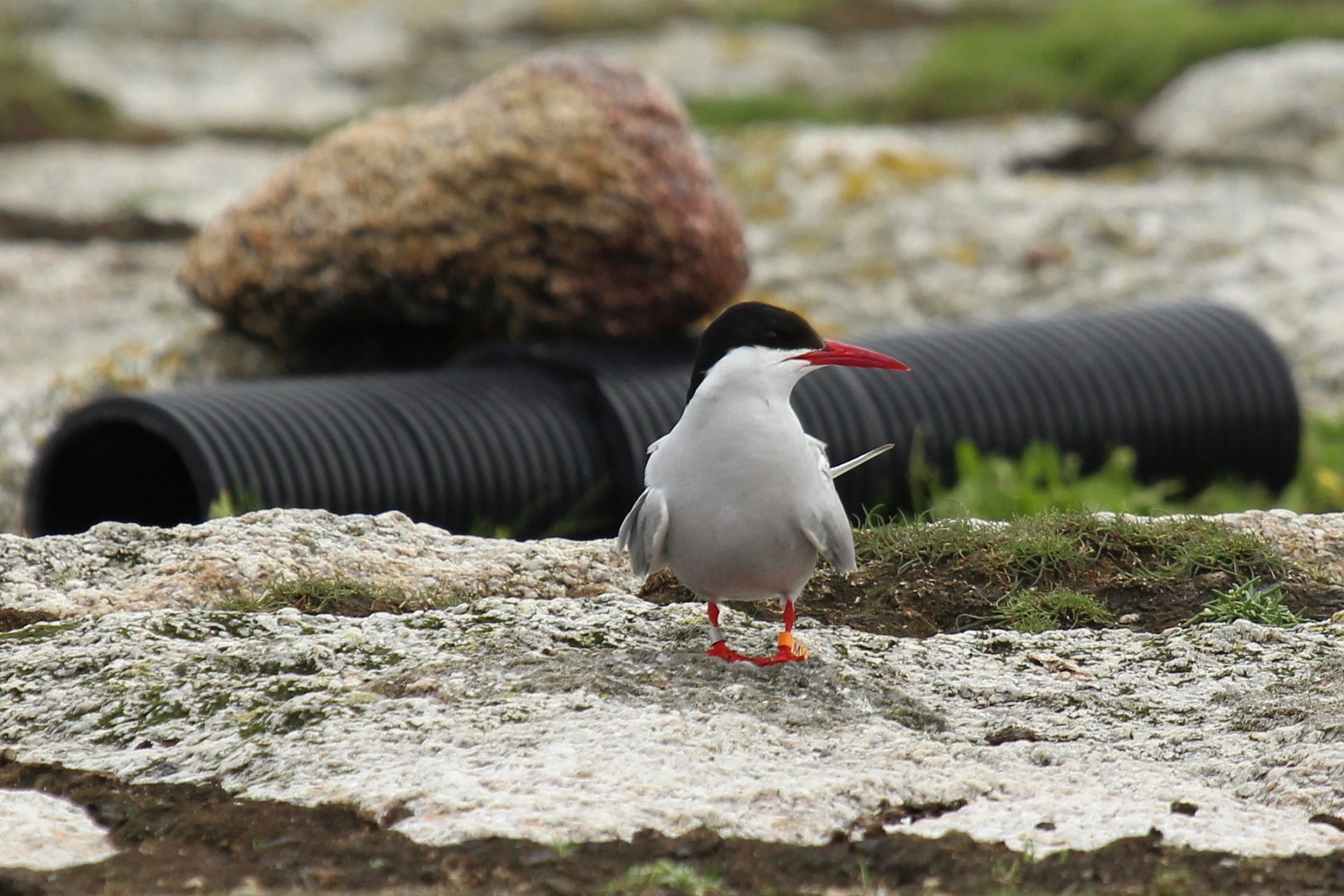
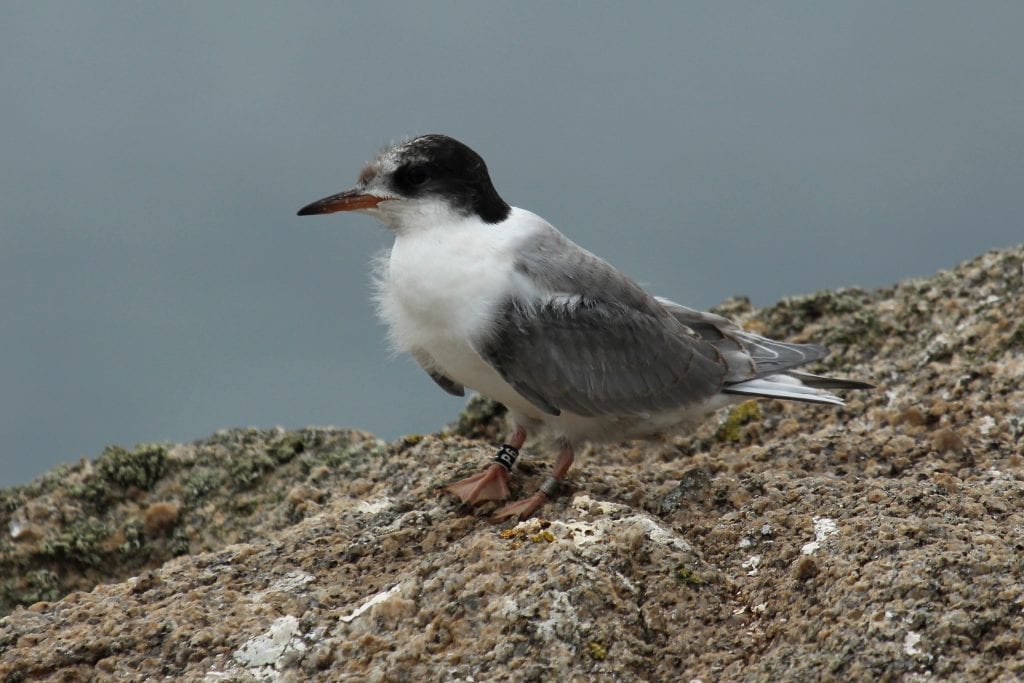 Arctic Tern ‘P6’ fledged from Lamb Island in July 2020. (Jan Rod) Photo taken under NPWS licence.
Arctic Tern ‘P6’ fledged from Lamb Island in July 2020. (Jan Rod) Photo taken under NPWS licence.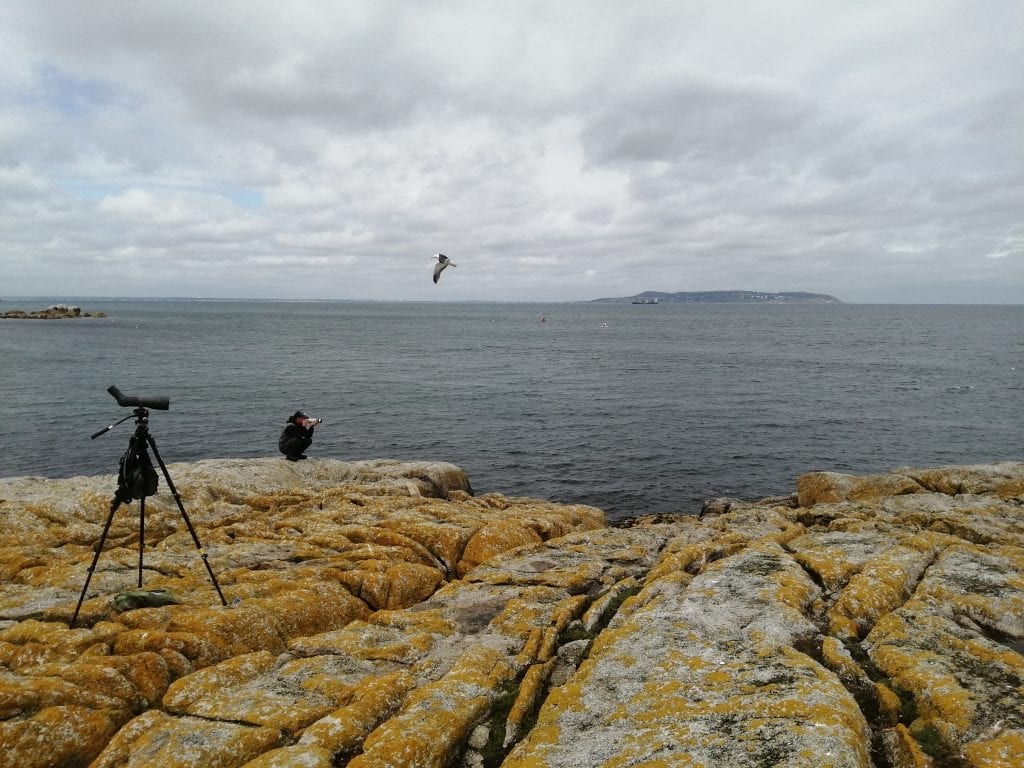 Jan Rod ring-reading on Dalkey Island. (Tara Adcock)
Jan Rod ring-reading on Dalkey Island. (Tara Adcock)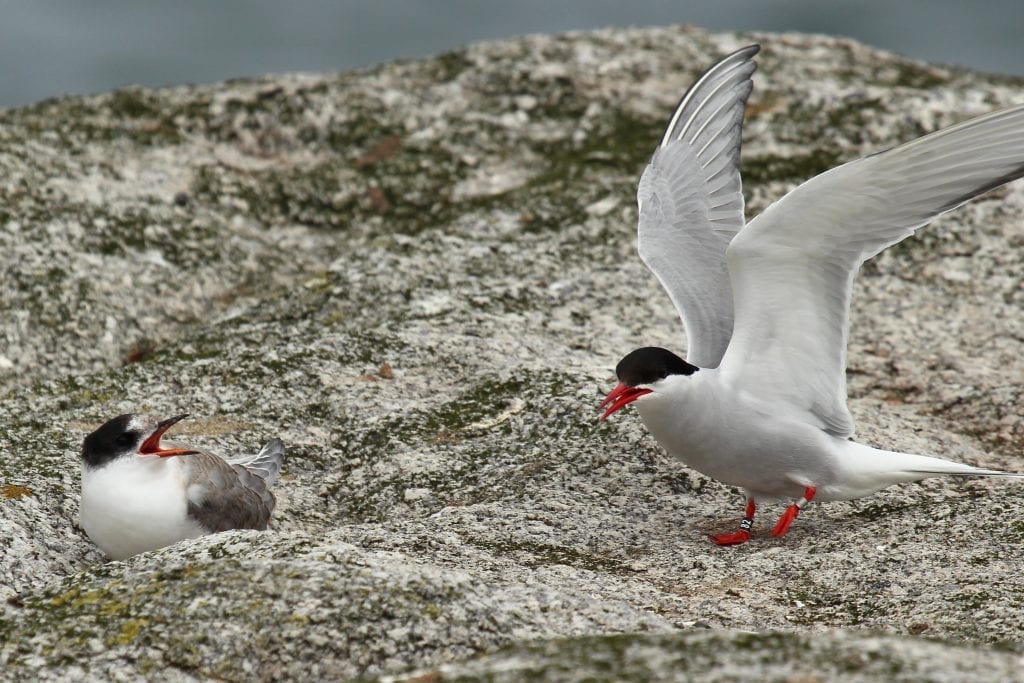 Arctic Tern ’82’ ringed as a chick on Maiden Rock in 2017, with fledgling on Dalkey Island. (Jan Rod) Photo taken under NPWS licence.
Arctic Tern ’82’ ringed as a chick on Maiden Rock in 2017, with fledgling on Dalkey Island. (Jan Rod) Photo taken under NPWS licence.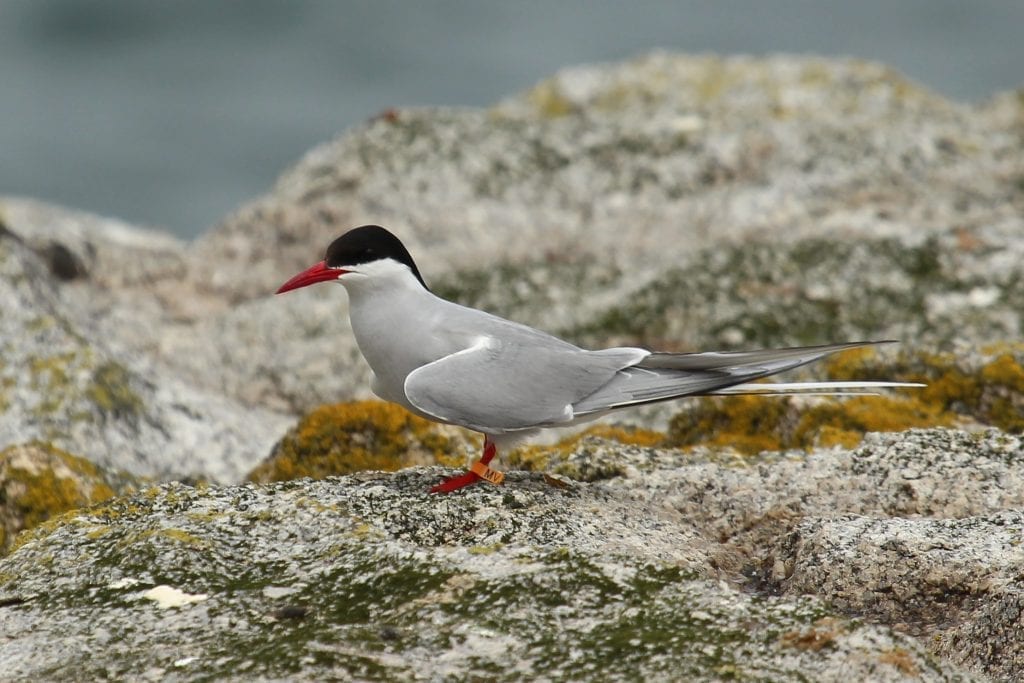 Arctic Tern ‘MV’ originally ringed at the Skerries colony in Wales and breeding on Dalkey Island 2020. (Jan Rod) Photo taken under NPWS licence.
Arctic Tern ‘MV’ originally ringed at the Skerries colony in Wales and breeding on Dalkey Island 2020. (Jan Rod) Photo taken under NPWS licence.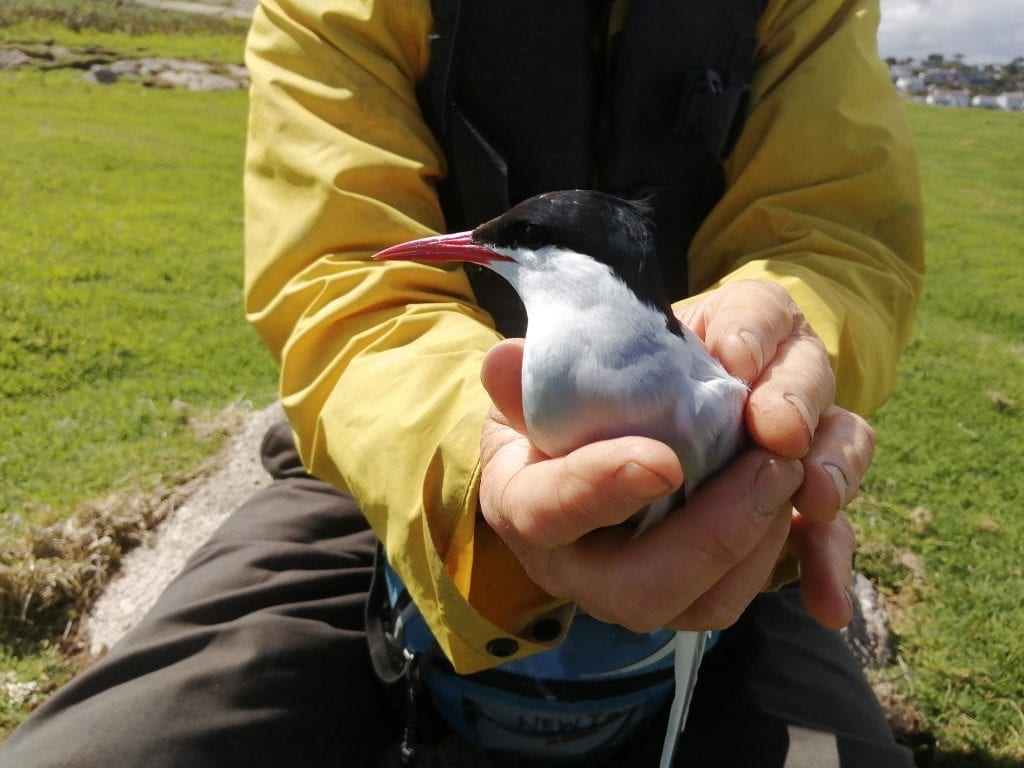 Adult Arctic Tern colour-ringed on Dalkey Island 2020. (Tara Adcock) Photo taken under NPWS licence.
Adult Arctic Tern colour-ringed on Dalkey Island 2020. (Tara Adcock) Photo taken under NPWS licence.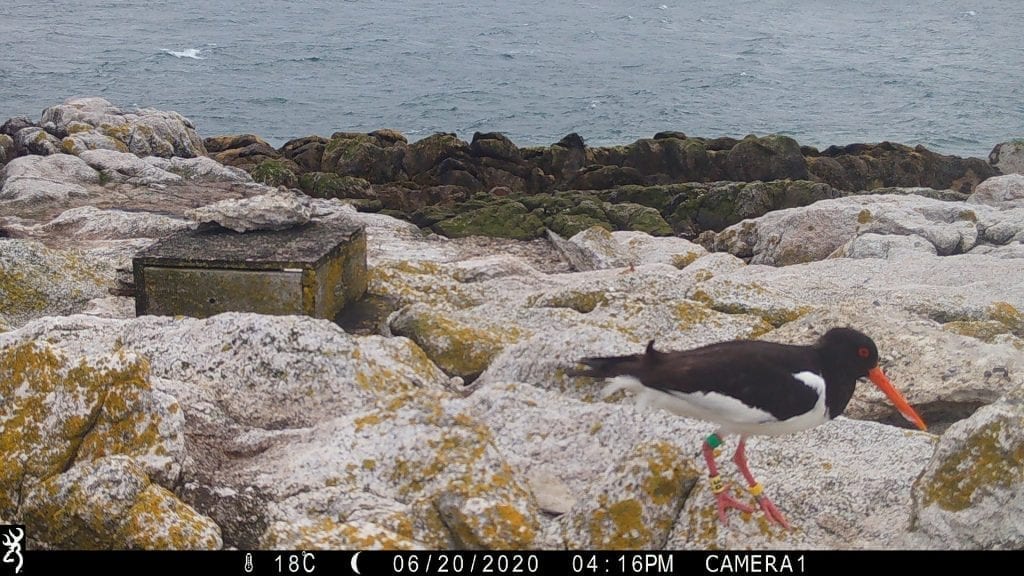 Oystercatcher ‘PF’ colour-ringed by the Dublin Bay Birds Project in 2014 and recorded breeding on Maiden Rock nearly every year since 2016. (Photo taken under NPWS licence).
Oystercatcher ‘PF’ colour-ringed by the Dublin Bay Birds Project in 2014 and recorded breeding on Maiden Rock nearly every year since 2016. (Photo taken under NPWS licence).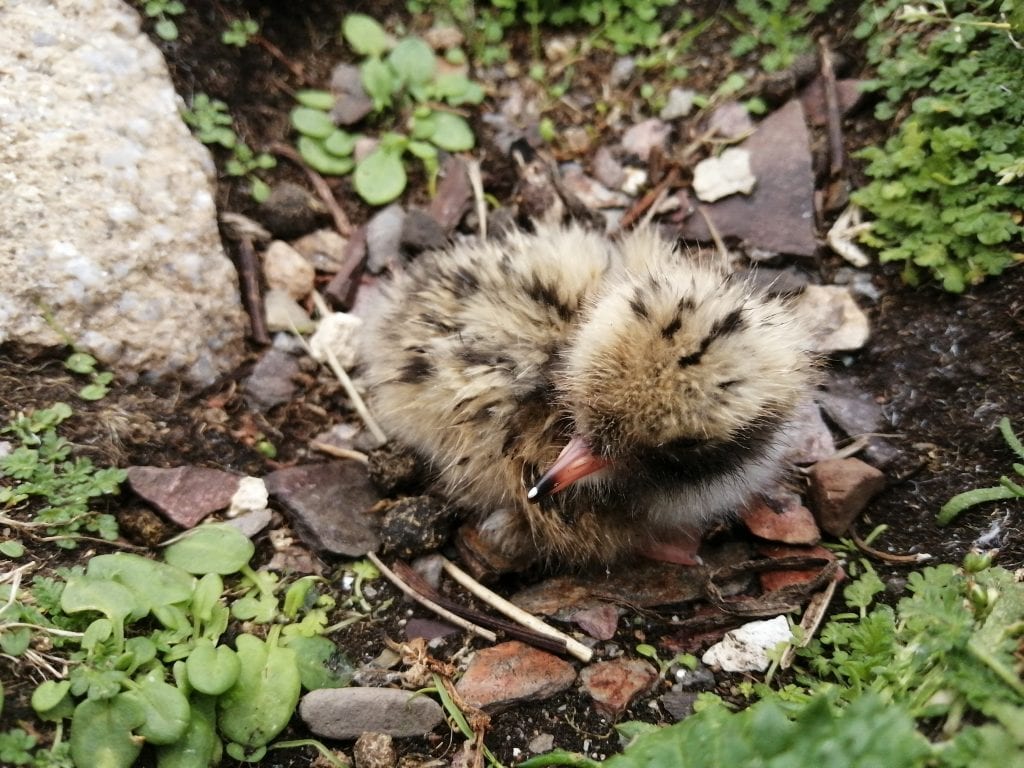 A Common Tern chick on Lamb Island. (Tara Adcock) Photo taken under NPWS licence.
A Common Tern chick on Lamb Island. (Tara Adcock) Photo taken under NPWS licence.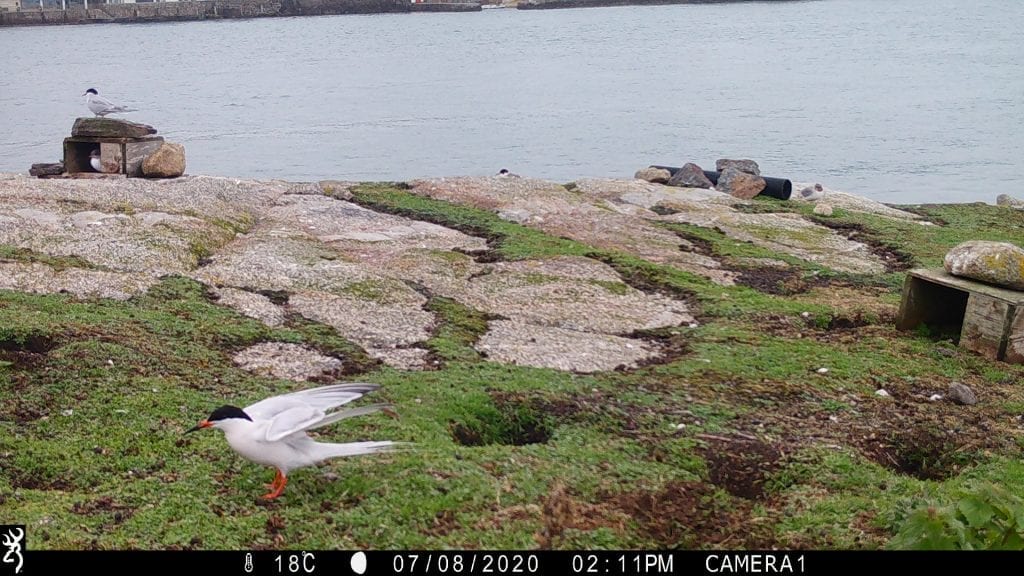 Roseate Tern on Lamb Island. Photo taken under NPWS licence.
Roseate Tern on Lamb Island. Photo taken under NPWS licence.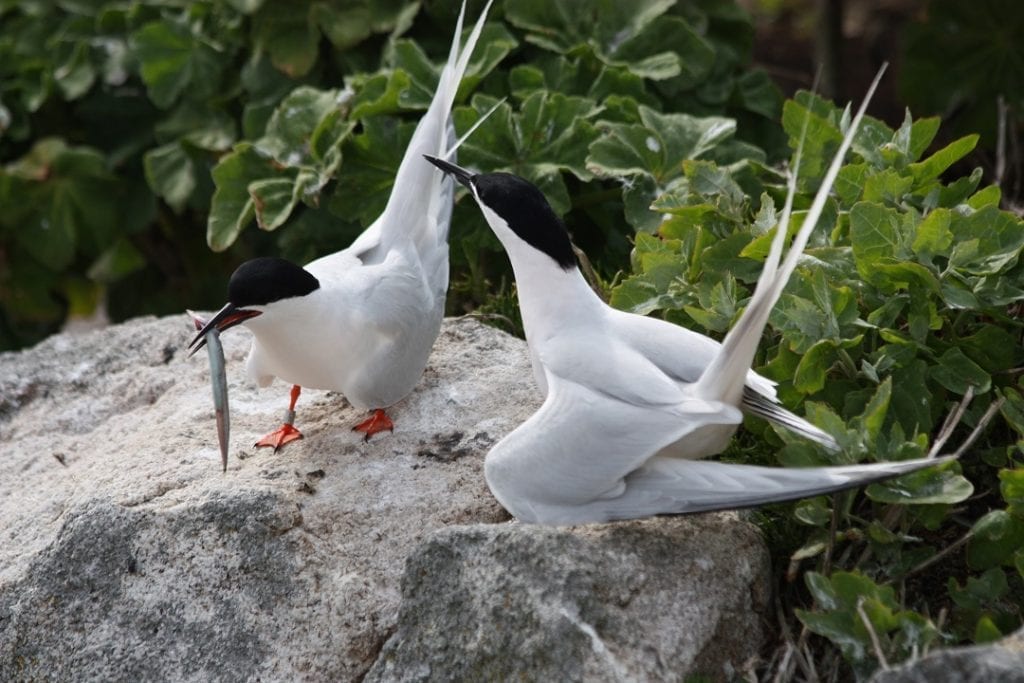 Roseate Tern courtship display. (Laura Glenister) Photo taken under NPWS licence.
Roseate Tern courtship display. (Laura Glenister) Photo taken under NPWS licence.